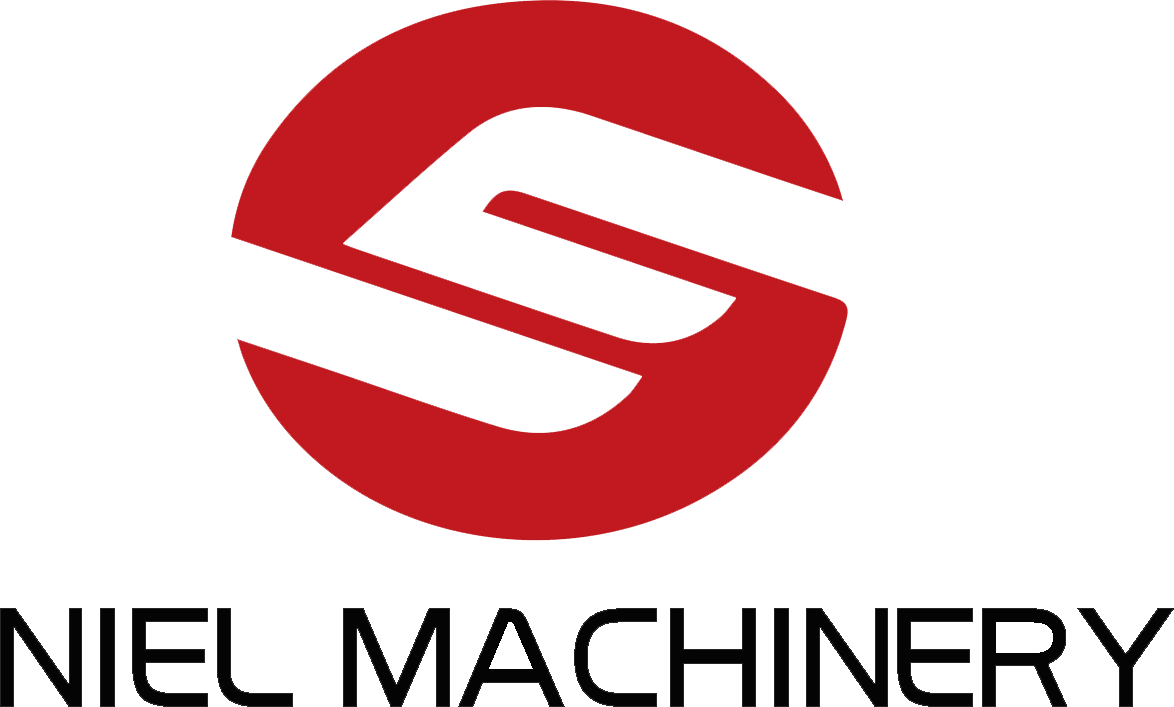Enhancing Powder Mixing Efficiency with Ribbon Mixer Technology for Optimal Performance
Release time:
2025-05-08 09:00
Source:
Enhancing Powder Mixing Efficiency with Ribbon Mixer Technology
Introduction to Ribbon Mixer Technology
In the manufacturing sector, especially in industries requiring precise powder blending, the efficiency of mixing equipment plays a pivotal role. **Ribbon mixers** stand out as a preferred choice due to their ability to deliver consistent and uniform mixtures. This article delves into the intricacies of ribbon mixer technology, exploring how it enhances powder mixing efficiency and its significance across diverse applications.
Understanding the Mechanics of Ribbon Mixers
What is a Ribbon Mixer?
A ribbon mixer is a type of industrial mixer designed to blend dry powders, granules, and other bulk materials. Its structure consists of a horizontal cylindrical container equipped with a helical ribbon agitator that moves materials toward the center while simultaneously pushing them outward along the walls. This mechanism ensures a thorough and uniform mixing process.
How Ribbon Mixers Operate
The operation of ribbon mixers revolves around the principles of **shear and convective mixing**. The ribbon's design allows for a combination of axial and radial motion, facilitating a comprehensive blend of materials. The rotation speed can be adjusted to optimize the mixing process based on the characteristics of the materials involved.
Key Benefits of Using Ribbon Mixers
1. Enhanced Mixing Efficiency
One of the primary advantages of ribbon mixers is their ability to achieve a high level of **mixing efficiency** in a relatively short amount of time. The continuous motion of the ribbon facilitates rapid blending, making it ideal for large batches of powdered materials.
2. Uniformity of Mixtures
Ribbon mixers are engineered to deliver exceptional **uniformity** in the final product. The design ensures that all materials, regardless of particle size or density, are mixed evenly. This consistency is vital in industries such as food processing, pharmaceuticals, and chemicals, where uniformity can significantly impact product quality.
3. Versatility Across Industries
Ribbon mixers are highly versatile, making them suitable for a variety of industries, including:
- **Food Production:** For blending ingredients such as spices, flour, and seasonings.
- **Pharmaceuticals:** Ensuring uniformity in drug formulations.
- **Plastics:** Mixing additives and fillers into plastic resins.
- **Chemicals:** Combining powdered chemicals for various applications.
4. Reduced Material Waste
The design of ribbon mixers minimizes the risk of **material wastage**. The efficient mixing process ensures that nearly all materials are blended, reducing residue left in the mixer and enhancing overall operational efficiency.
5. Easy Maintenance and Operation
Ribbon mixers are known for their straightforward design, which simplifies both operation and maintenance. Regular cleaning and maintenance tasks can be performed quickly, ensuring minimal downtime and maximum productivity.
Choosing the Right Ribbon Mixer for Your Needs
Factors to Consider
When selecting a ribbon mixer, several factors should be evaluated to ensure it meets your specific needs:
- **Volume and Capacity:** Assess the volume of materials that need to be mixed and choose a mixer that can handle your production level.
- **Material Characteristics:** Consider the properties of the powders being mixed, including particle size, density, and flowability.
- **Mixing Time:** Determine the required mixing time for your processes and select a mixer that can achieve this efficiently.
- **Customization Options:** Some manufacturers offer customizable designs to cater to unique production requirements.
Types of Ribbon Mixers
There are several variations of ribbon mixers available, including:
- **Single Ribbon Mixers:** Ideal for general mixing tasks.
- **Double Ribbon Mixers:** Provide enhanced mixing capabilities, suitable for more demanding applications.
- **Vertical Ribbon Mixers:** Designed for specific applications where vertical space is limited.
Operational Best Practices for Ribbon Mixers
1. Proper Loading Techniques
Efficient mixing starts with how materials are loaded into the ribbon mixer. Ensure that materials are added evenly to prevent clumping and promote uniform distribution.
2. Regular Maintenance Schedule
Establishing a regular maintenance schedule is crucial to prolonging the lifespan of your ribbon mixer. Regular checks and cleaning will prevent material buildup and mechanical failures.
3. Monitoring Mixing Parameters
Keep an eye on critical mixing parameters such as speed, time, and temperature. Adjusting these settings based on the specific materials being mixed can significantly improve the quality of the end product.
Applications of Ribbon Mixers in Various Industries
Food Industry Applications
In the food industry, ribbon mixers are commonly used for blending dry ingredients such as flour, sugar, and spices. The ability to achieve uniformity is essential for product consistency and quality.
Pharmaceutical Manufacturing
Pharmaceutical companies rely on ribbon mixers to ensure accurate and uniform blending of active pharmaceutical ingredients (APIs) with excipients. This uniformity is critical for dosage accuracy and regulatory compliance.
Chemical Processing
In the chemical industry, ribbon mixers facilitate the blending of various powdered chemicals. The ability to mix different density powders effectively is vital for producing high-quality chemical products.
Case Studies: Success Stories with Ribbon Mixers
Case Study 1: Food Production Facility
A leading food production facility implemented ribbon mixer technology to enhance their ingredient blending operations. By switching to a double ribbon mixer, they improved mixing efficiency by 30%, resulting in cost savings and higher product uniformity.
Case Study 2: Pharmaceutical Company
A pharmaceutical company faced challenges with inconsistent drug formulations. After integrating a ribbon mixer into their production line, they achieved a 25% reduction in mixing time, leading to more reliable product quality and increased production rates.
Frequently Asked Questions (FAQs)
1. What materials can be mixed using a ribbon mixer?
Ribbon mixers are suitable for a wide range of dry powders, granules, and bulk materials, such as food ingredients, pharmaceuticals, chemicals, and plastics.
2. How do I determine the right capacity for my ribbon mixer?
Consider your production volume and the batch size needed for your mixing processes. Consulting with a supplier can help you determine the appropriate capacity.
3. Can ribbon mixers handle materials with different particle sizes?
Yes, ribbon mixers are designed to handle materials of varying particle sizes effectively, ensuring uniform mixing regardless of size discrepancies.
4. What maintenance is required for a ribbon mixer?
Regular cleaning, lubrication of moving parts, and inspections for wear and tear are essential to maintain optimal performance and longevity.
5. How does a ribbon mixer compare to other mixing technologies?
Ribbon mixers offer a combination of high efficiency, mixing uniformity, and versatility, making them a preferred choice over other mixing technologies for many applications.
Conclusion
Ribbon mixer technology is transforming powder mixing processes across various industries, enhancing efficiency, uniformity, and reducing material waste. By understanding the mechanics, benefits, and best practices associated with ribbon mixers, businesses can optimize their operations and stay competitive in a rapidly evolving market. Investing in ribbon mixer technology not only improves productivity but also ensures the quality and consistency of the final products. Embrace this innovative solution to elevate your mixing processes and drive success in your industry.
Related News
Boosting Efficiency: Semi Automatic Powder Filling Machine in Action
Boosting Efficiency: Semi Automatic Powder Filling Machine in Action Table of Contents 1. Introduction to Semi Automatic Powder Filling Machines 2. What is a Semi Automatic Powder Filling Machine? 3. How Does a Semi Automatic Powder Filling Machine Work? 4. Benefits of Semi Automatic Powder Filling Machines 5. Applications of Semi Automatic Powder Filling Machines 6. Maint
Understanding Semi-Automatic Powder Filling Machines: A Comprehensive Overview
Semi-automatic powder filling machines are pivotal in the packaging sector, particularly for businesses handling powdered products such as spices, flour, chemicals, and pharmaceuticals. These machines bridge the gap between manual filling methods and fully automatic systems, offering businesses an optimal solution for efficiency and precision. One of the primary advantages of semi-automatic powder
The Evolution of Mixing Machinery: Horizontal Paddle Mixers at the Forefront
The Evolution of Mixing Machinery: Horizontal Paddle Mixers at the Forefront Table of Contents 1. Introduction to Mixing Machinery 2. A Brief History of Mixing Machinery 3. Technological Advancements in Mixing Machinery 4. Understanding Horizontal Paddle Mixers 5. Applications of Horizontal Paddle Mixers 6. Advantages of Horizontal Paddle Mixers 7. The Future of Mixing Machinery 8
The Essential Guide to Horizontal Paddle Mixers: Applications and Benefits
Horizontal paddle mixers are vital components in various manufacturing and processing operations, particularly within the realm of mixing machinery. Understanding the workings and benefits of these mixers can significantly enhance operational efficiency and product quality. A horizontal paddle mixer typically features a cylindrical mixing chamber equipped with paddles that rotate on a horizontal a
Exploring the Dynamic Capabilities of Industrial Ribbon Mixers Table of Contents Introduction to Industrial Ribbon Mixers Understanding the Mechanics of Ribbon Mixers Advantages of Using Ribbon Mixers in Manufacturing Applications of Ribbon Mixers Across Industries Maintaining Your Ribbon Mixer for Longevity Future Trends in Ribbon Mixer Technology Case Studies: Ribbon Mixers in Act
Understanding Industrial Ribbon Mixers: Essential Tools for Effective Material Blending
Industrial ribbon mixers are vital pieces of equipment used in various manufacturing processes, particularly in the blending of powdered and granular materials. These mixers are characterized by their unique design, featuring a set of helical ribbons that move materials through the mixing chamber, ensuring a thorough and uniform blend. With increasing demands for consistency and quality in product




















